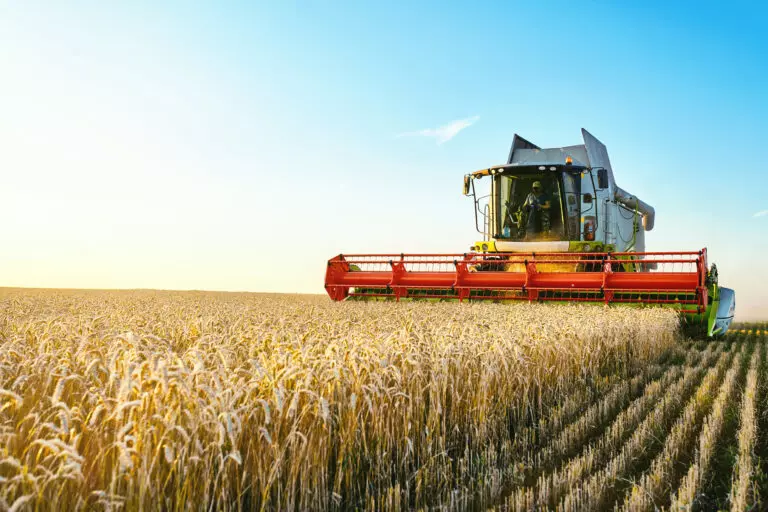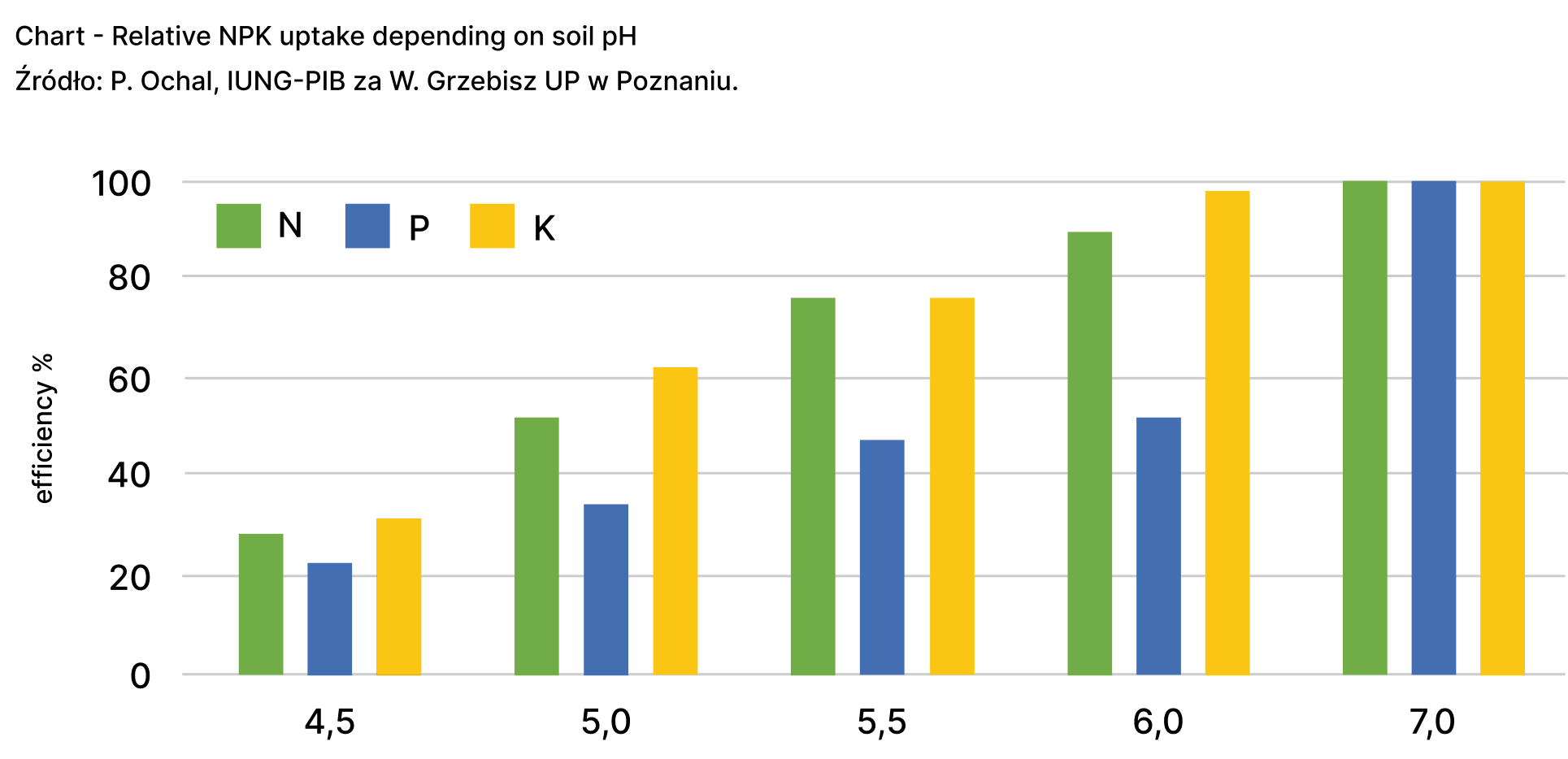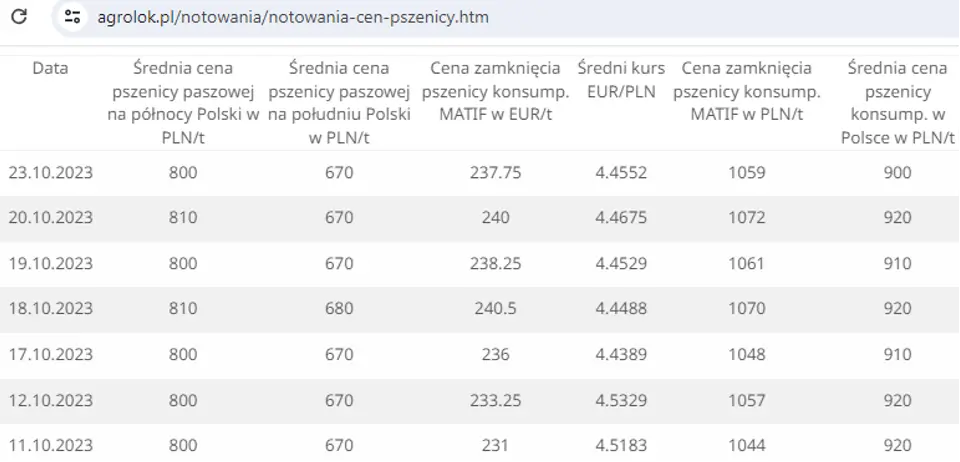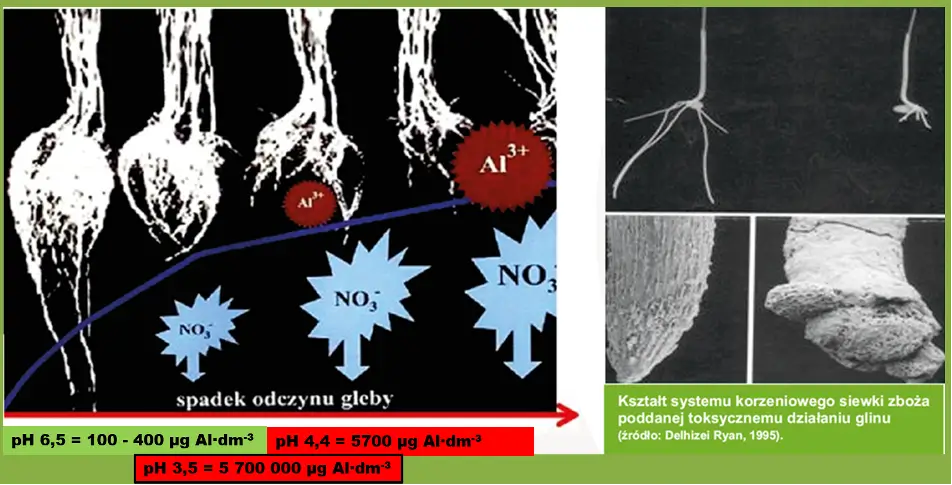
The disruption of Polish agriculture caused by the geopolitical situation, especially the war in Ukraine, as well as very low purchase prices for harvested crops at a time when the prices of fertilizers used in the previous year were astronomically high, has necessitated the need to limit expenses on agricultural production. Farmers must seek financial reserves and reduce agricultural production costs through „optimization”, which essentially means reducing the level of fertilization, adversely affecting the quality and quantity of yields. Unfortunately, the difficult situation in Polish agriculture is unlikely to improve shortly, especially concerning the purchase prices of grains and rapeseed. Among the mentioned cultivated plants, probably the worst situation will be in the grain market, which accounted for 67% of crops in the sowing structure in 2023, i.e., they were cultivated on an area of 5.9 million hectares of agricultural land in Poland. Wheat occupied the largest area among grains – 2,283,491.66 hectares (stat.gov.pl). Therefore, in the case of the necessity to „optimize” the mineral fertilization of grains, especially wheat, it is essential to regulate the soil pH by using highly reactive carbonate calcium fertilizers such as Polcalc III Generation or calcium-magnesium fertilizers like SuperMag. Krysztoforski (2019) states that a significant decrease in nutrient uptake by plants occurs when the soil pH drops below 5.5. Regulating soil pH significantly affects the utilization of mineral elements (nitrogen, phosphorus, potassium) from the soil and applied mineral fertilizers. Pietr and Krysztoforski (2022) state that raising the soil pH to 6.0, with a constant fertilizer dose, results in over a twofold increase in the efficiency of NPK fertilization compared to the utilization level of these macronutrients at pH 5.0 (Fig. 1.).

Regulating soil pH through liming, as demonstrated by Deja and Remarczyk (2018), contributes to yield increases: wheat and barley by 15-30%, rye and oats by 10-15%. Additionally, in the case of acidic soils with low magnesium content, the application of magnesium lime leads to a further 10-15% increase in grain yields (Deja and Remarczyk 2018). Pietr and Krysztoforski (2022) suggest that a rational liming program, i.e., maintaining optimal soil pH at a minimum of pH 6.0 by applying necessary lime doses as needed each year, can result in an average increase of 400 kg of grains per hectare annually, and the effect will persist for many years. It has also been shown that regulating soil pH through liming positively affects the increase in the number of beneficial soil bacteria. In slightly acidic soils (pH 6.0-6.5), the content of bacteria such as Azotobacter and Clostridium pasteurianum significantly increases, assimilating free nitrogen from the air (Krysztoforski 2019). They can supply plants with up to 30 kg N·ha-1, allowing for a reduction in the dose of this element in mineral form while maintaining the targeted wheat grain yield. The current year was characterized by significant variability in grain yields, especially winter wheat, in various regions of Poland. In 2023, the average yield of wheat cultivars (Pallas, RGT Kilimanjaro, Artist, Symetria) in COBORU stations was 9.81 t·ha-1 for protection level a1 (coboru.gov.pl). Meanwhile, the average wheat yield obtained in the Agricultural Experimental Stations of IUNG-PIB was 6 t·ha-1 (iung.pl). Also, in individual farms, the average wheat yields were around 6-6.5 t·ha-1 (www.farmer.pl). Probably, in some farms, the grain yield of wheat could be increased by adjusting the soil pH to the optimal level (pH 6.0-6.5). In that case, the yield, as stated by Deja and Remarczyk (2018), could be higher by 15-30%, on average by 22.5%, resulting in an additional 1350-1460 kg of wheat grain per hectare. Considering the current purchase prices of wheat grain as of October 23, 2023, an additional profit of approximately 992-1073 PLN·ha-1 could be obtained (Fig. 2.).

The obtained amount will completely cover the cost of purchasing and applying a ton of granulated Polcalc III Generation lime, and the beneficial effect of liming will contribute to the increase in the yield of the next crop in rotation and significantly improve soil conditions. After subtracting the cost of purchasing Polcalc III Generation granulated lime, the profit from wheat cultivation will amount to 490-573 PLN·ha-1. Raising soil pH through frequent liming with small doses stabilizes soil microbiology (Pietr and Krysztoforski 2022) and reduces the concentration of aluminum ions, whose high content in soil solution causes growth cone deformation and root hair death (Delhizei Ryan 1995). Therefore, liming affects the development of the plant root system favorably, which is particularly important in dry years with a significant deficit of rainfall available to plants (Fig. 3.).

For detailed information about our fertilizer products and their beneficial effects on soil properties, please contact our hotline at 880-880-801. We also encourage you to contact our sales representatives and distributors of our fertilizers, whose current list can be found on our website (www.polcalc.pl).






